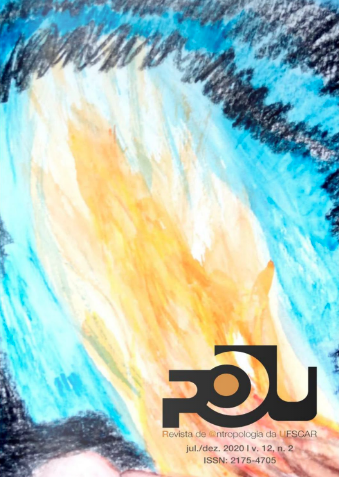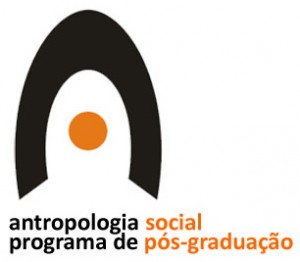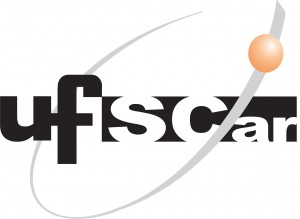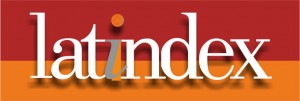A emergência da etnografia multiespécies
DOI:
https://doi.org/10.52426/rau.v12i2.359Resumo
Antropólog(a)s têm se dedicado, ao menos desde Franz Boas, a investigar as relações entre natureza e cultura. No alvorecer do século XXI, este interesse recorrente vem sendo alterado diante de novas torções. Um conjunto de “etnógrafo(a)s multiespécies” começaram a depositar ênfase inédita na subjetividade e na agência de organismos cujas vidas estão emaranhadas às vidas humanas. A etnografia multiespécies emergiu na interseção de três linhas de investigação interdisciplinares: os estudos ambientais, os estudos sociais da ciência e da tecnologia (STS) e os estudos animais. Começando pelos clássicos assuntos etnobiológicos, plantas úteis e animais carismáticos, etnógrafo(a)s multiespécies igualmente convidaram organismos pouco estudados – tais como insetos, fungos e micróbios – para a conversação antropológica. Este(a)s antropólog(a)s reuniramse no Salão Multiespécies (Multispecies Salon), uma mostra de arte, onde as fronteiras de uma interdisciplina emergente foram exploradas em meio a uma coleção de organismos vivos, artefatos das ciências biológicas e surpreendentes intervenções biopolíticas.
Referências
ABU-LUGHOD, Lila. 1991. “Writing against Culture”. In: R. Fox (ed.), Recapturing Anthropology: working in the present. Santa Fe, NM: School of American Research. pp. 137-162.
AGAMBEN, Giorgio. 1998 [1995]. Homo Sacer: sovereign power and bare fife. Daniel HellerRoazen, tradutor. Stanford: Stanford University Press.
ANDERSON, Virginia DeJohn. 2004. Creatures of empire: how domestic animals transformed Early America. New York: Oxford University Press.
APPADURAI, Arjun. 1988. “Introduction: place and voice in Anthropological Theory”. Cultural Anthropology, 3(1): 16–20.
BAMFORD, Sandra. 2007. Biology unmoored: Melanesian reflections on life and biotechnology. Berkeley: University of California Press.
BATESON, Gregory. 1972. Steps to an ecology of mind: collected essays in Anthropology, Psychiatry, Evolution, and Epistemology. Chicago: University of Chicago Press.
______. 1979. Mind and Nature: a necessary unity (Advances in Systems Theory, Complexity, and the Human Sciences). Cresskill, NJ: Hampton.
BENSON, Etienne. 2010. Wired wilderness: technologies of tracking and the making of modern wildlife. Baltimore: Johns Hopkins University Press.
BERRIGAN, Caitlin. 2009. Life cycle of a common weed: reciprocity, anxiety and the aesthetics of noncatharsis. Master’s thesis, Visual Arts Program, MIT.
BIEHL, João 2005. Vita: life in a zone of social abandonment. Berkeley: University of California Press.
BISHOP, Claire. 2004. “Antagonism and relational aesthetics”. October, 110: 51–79.
BOELLSTORFF, Tom. 2008. Coming of age in Second Life: an anthropologist explores the virtually human. Princeton: Princeton University Press.
BOWER, Sam. 2009. “A profusion of terms: Green Museum”. Disponível em http://www.greenmuseum.org/generic_content.php?ct_id=306 (acesso 21 de Maio de 2009).
BRAITMAN, Laurel. 2010. Animal Madness: what mental illness in animals proves about being human. Ph.D. dissertation proposal, Program in History, Anthropology, and Science, Technology and Society, MIT.
BUCLEY, Liam. 2005. “Objects of love and decay: colonial photographs in a postcolonial archive”. Cultural Anthropology, 20(2): 249–270.
BULMER, Ralph. 1967. “Why is the Cassowary not a bird? A problem of zoological taxonomy among the Karam of the New Guinea Highlands. Man: The Journal of the Royal Anthropological Institute, 2(1): 5–25.
BUREAUD, Annick. 2002. “The ethics and aesthetics of Biological Art”. Art Press, 276: 38–39.
CANDEA, Matei. 2010. “‘I fell in love with Carlos the Meerkat’: engagement and detachment in human-animal relations”. American Ethnologist, 37(2): 241–258.
CASSIDY, Rebecca & MULLIN, Molly (eds.). 2007. Where the wild things are now: domestication reconsidered. Oxford: Berg.
CATTS, Oron & ZURR, Ionat. 2008. “The ethics of experiential engagement with the manipulation of life”. In: B da Costa & K. Philip (eds.), Tactical Biopolitics: Art, Activism, and Technoscience. Cambridge, MA: MIT Press. pp. 125–142.
CHOY, Timothy; FAIER, Lieba; HATHAWAY, Michael; INOUE, Miyako; SATSUKA, Shiho & TSING, Anna. 2009. “A new form of collaboration in Cultural Anthropology: Matsutake Worlds”. American Ethnologist, 36(2): 380–403.
CLÉMENT, Daniel. 1998. “The historical foundations of Ethnobiology (1860-1899)”. Journal of Ethnobiology, 18(2): 161–187.
CLIFFORD, James. 1986. “Partial truths”. In: J. Clifford & G. Marcus (eds.), Writing culture: The poetics and politics of Ethnography. Berkeley: University of California Press. pp. 1–26.
COOPER, Melinda. 2008. Life as surplus: Biotechnology and Capitalism in the Neoliberal Era. Seattle: University of Washington Press.
CRUTZEN, Paul J. & STOERMER, Eugene F.. 2000. “The Anthropocene. Global Change”. Newsletter, 41: 17–18.
DA COSTA, Beatriz & PHILIP, Kavita (eds.). 2008. Tactical Biopolitics: Art, Activism, and Technoscience. Cambridge, MA: MIT Press.
DELEUZE, Gilles & GUATTARI, Félix. 1987. A thousand plateaus: capitalism and schizophrenia. Brian Massumi, tradutor. Minneapolis: University of Minnesota Press.
DE RUITER, Peter C.; WOLTERS, Volkmar & MOORE, John C. (eds.). 2005. Dynamic food webs, vol. 3: multispecies assemblages, ecosystem development and environmental change. Burlington, MA: Academic.
DOWNEY, Gary Lee; DUMIT, Joseph & WILLIAMS, Sarah. 1995. “Cyborg Anthropology”. Cultural Anthropology, 10(2): 264–269.
DOYLE, Rich. 2005. “Hyperbolic: divining Ayahuasca”. Discourse, 27(1): 6–33.
______. 2006. “The transgenic involution”. In: E. Kac (ed.), Signs of Life: Bio Art and beyond. Cambridge, MA: MIT Press. pp. 69-82.
DUNN, Elizabeth. 2007. “Escherichia coli, corporate discipline and the failure of the sewer state”. Space and Polity, 11(1): 35–53.
DUPRE, John. 1992. “Species: theoretical contexts”. In: E. F. Keller & E. A. Lloyd (eds.), Keywords in Evolutionary Biology. Cambridge, MA: Harvard University Press. pp. 312-317.
EPSTEIN, Steven. 2008. “The rise of ‘Recruitmentology’: clinical research, racial knowledge, and the politics of inclusion and difference”. Social Studies of Science, 38(5): 739–770.
FEELEY-HARNIK, Gillian. 2001. “The ethnography of creation: Lewis Henry Morgan and
the American Beaver”. In: S. Franklin & S. McKinnon (eds.), Relative values: reconfiguring kinship studies. Durham, NC: Duke University Press. pp. 54-84.
FISCHER, Michael. 2007. “Four genealogies for a recombinant Anthropology of Science and Technology”. Cultural Anthropology, 22(4): 539–615.
______. 2009. Anthropological futures. Durham, NC: Duke University Press.
FORTUN, Michael. 2001. “Mediated speculations in the genomics futures markets”. New Genetics and Society, 20(2): 139–156.
______. 2008 Promising genomics: Iceland, deCODE genetics, and a world of speculation. Berkeley: University of California Press.
FRANKLIN, Sarah. 2001. “Biologization revisited: kinship theory in the context of the New Biologies”. In: S. Franklin & S. McKinnon (eds.), Relative values: reconfiguring kinship studies. Durham, NC: Duke University Press. pp. 302–325.
______. 2007. Dolly mixtures: the remaking of genealogy. Durham, NC: Duke University Press.
______. 2008. “Future Mix”. In: 107th Annual Meeting of the American Anthropological Association, San Francisco, California, November 19–23.
FRANKLIN, Sarah & LOCK, Margaret. 2003. “Animation and cessation: the remaking of life and death”. In: S. Franklin & M. Lock (eds.), Remaking life and death: toward an Anthropology of the Biosciences. Santa Fe, NM: School of American Research Press. pp. 3-22.
FUENTES, Agustín & WOLFE Linda (eds.). 2002. Primates face to face: conservation implications of human-nonhuman primate interconnections. Cambridge: Cambridge University Press.
FULLWILEY, Duana. 2007. “The molecularization of race: institutionalizing human difference in pharmacogenetics research”. Science as Culture, 16(1): 1–30.
FUJIMURA, Joan H. 1998. “Authorizing knowledge in Science and Anthropology”. American Anthropologist, 100(2): 347–360.
GABLIK, Suzi. 1991. The Reenchantment of Art. New York: Thames and Hudson.
GEERTZ, Clifford. 1962. “The growth of culture and the evolution of mind”. In: J. M. Scher (ed.), Theories of the mind. New York: Free Press of Glencoe. pp. 713-740.
GELL, Alfred. 1998. Art and agency: an anthropological theory. Oxford: Clarendon.
GEORGE, Kenneth. 2009. “Ethics, iconoclasm, and Qur’anic art in Indonesia”. Cultural Anthropology, 24(4): 589–621.
GIBBON, Sahra & NOVAS, Carlos (eds.). 2008. Biosocialities, genetics and the Social Sciences: making biologies and identities. London: Routledge.
GOODMAN, Alan; HEATH, Deborah & LINDEE, M. Susan (eds.). 2003. Genetic nature/culture: Anthropology and Science beyond the two-culture divide. Berkeley: University of California Press.
GUPTA, Akhil & FERGUSON, James. 1992. “Beyond ‘Culture’: space, identity, and the politics of difference”. Cultural Anthropology, 7(1): 6–23.
HARAWAY, Donna. 1989. Primate visions: gender, race, and nature in the world of Modern Science. New York: Routledge.
______. 1991. “A Cyborg Manifesto: science, technology, and socialist-feminism in the late twentieth century”. In: D. Haraway (ed.), Simians, cyborgs, and women: the reinvention of nature. New York: Routledge. pp. 149-182.
______. 1995. “Universal donors in a vampire culture, or it’s all in the family: biological kinship categories in the twentieth-century United States”. In: W. Cronon (ed.), Uncommon ground: toward reinventing nature. New York: W. W. Norton. pp. 321-366.
______. 1997. Modest _ Witness@Second _ Millennium.FemaleMan©_ Meets _ OncoMouseTM: Feminism and Technoscience. New York: Routledge.
______. 2003. A Companion Species Manifesto: Dogs, People, and Significant Otherness. Chicago: Prickly Paradigm Press.
______. 2007. “Speculative fabulations for technoculture’s generations: taking care of unexpected country. (Tender) Creature Exhibition Catalogue”. Artium. Disponível em http://www.patriciapiccinini.net/essay.php (acesso em 5 de Agosto de 2010).
______. 2008. When species meet. Minneapolis: University of Minnesota Press.
______. 2010. “Staying with the trouble: xenoecologies of home for Companions in the Contact Zones”. David Schneider Memorial Lecture at Meetings of the Society for Cultural Anthropology, Santa Fe, New Mexico, May 7.
HARDING, Susan Friend. 2010. “Get religion”. In: H. Gusterson & C. Besteman (eds.), The insecure American: how we got here and what we should do about it. Berkeley: University of California Press. pp. 345-361.
HARDT, Michael & NEGRI, Antonio. 2004. Multitude: war and democracy in the Age of Empire. New York: Penguin.
HARTOUNI, Valerie. 1997. Cultural conceptions: on reproductive technologies and the remaking of life. Minneapolis: University of Minnesota Press.
HAYDEN, Cori. 1995. “Gender, genetics, and generation: reformulating biology in lesbian kinship”. Cultural Anthropology, 10(1): 41–63.
______. 2003. When nature goes public: the making and unmaking of bioprospecting in Mexico. Princeton: Princeton University Press.
HAYWARD, Eva & KELLEY, Lindsay. 2010. “Carnal light: following the White Rabbit”. In: Meetings of the Society for Cultural Anthropology, Santa Fe, New Mexico, May 7.
HELMREICH, Stefan. 2003. “Trees and seas of information: alien kinship and the biopolitics of gene transfer in marine biology and biotechnology”. American Ethnologist, 30(3): 340– 358.
______. 2008. “Species of biocapital”. Science as Culture, 17(4): 463–478.
______. 2009. Alien Ocean: anthropological voyages in microbial seas. Berkeley: University of California Press.
HERZFELD, Michael. 2002. “The absent presence: discourses of crypto-colonialism”. South Atlantic Quarterly, 101(4): 899–926.
HIRD, Myra. 2009. The origins of sociable life: evolution after Science Studies. New York: Palgrave Macmillan.
HUIZINGA, Johan. 1949 [1938]. Homo Ludens: a study of the play-element in culture. R. F. C. Hull, tradutor. London: Routledge and Kegan Paul.
HUNN, Eugene S. 2007. “Ethnobiology in four phases”. Journal of Ethnobiology, 27(1): 1–10.
INGOLD, Tim. 1988. “The animal in the study of humanity”. In: T. Ingold (ed.), What is an animal? London: Routledge. pp. 84-99.
______. 1990. “An anthropologist looks at Biology”. Man, 25(2): 208–229.
KAC, Eduardo. 2007. Signs of life: Bio Art and beyond. Cambridge, MA: MIT Press.
KAC, Eduardo & RONELL, Avital. 2007. Life extreme: an illustrated guide to New Life. Cambridge, MA: MIT Press.
KIRKSEY, S. Eben & JOHNSTON, Marnia. 2008. “Call for Organisms”. Disponível em http://www.skyhighway.com/∼multispecies/cfo.html (acesso em 5 de Agosto de 2010).
KOHN, Eduardo. 2007. “How dogs dream: Amazonian natures and the politics of transspecies engagement”. American Ethnologist, 34(1): 3–24.
LANDECKER, Hannah. 2007. Culturing life: how cells became technologies. Cambridge, MA: Harvard University Press.
LATOUR, Bruno. 1988. The Pasteurization of France. Alan Sheridan e John Law, tradução. Cambridge, MA: Harvard University Press.
______. 1993. We have never been modern. Cambridge, MA: Harvard University Press.
______. 2002. War of the Worlds: what about peace? Chicago: Prickly Paradigm Press.
______. 2004. Politics of Nature. Cambridge, MA: Harvard University Press.
LEACH, Edmund. 1964. “Anthropological aspects of language: animal categories and verbal abuse”. In: E. H. Lenneberg (ed.), New directions in the study of language. Cambridge, MA: MIT Press. pp. 23-63.
LOWE, Celia. 2006. Wild profusion: biodiversity conservation in an Indonesian Archipelago. Princeton: Princeton University Press.
MARCUS, George E. 1986. “A beginning”. Cultural Anthropology, 1(1): 3–5.
______. 1995. “Ethnography in/of the World System: the emergence of Multi-Sited Ethnography”. Annual Review of Anthropology, 24: 95–117.
______. 2000. Para-Sites: a casebook against cynical reason. Chicago: University of Chicago Press.
______. 2008. “The end(s) of Ethnography: Social/Cultural Anthropology’s signature form of producing knowledge in transition”. Cultural Anthropology, 23(1): 1–14.
MARCUS, George E. & CALZADILLA, Fernando. 2005. “Artists in the field: on the threshold between Art and Anthropology”. In: A. Schneider & C. Wright (eds.), Contemporary Art and Anthropology. New York: Berg. pp. 95-116.
MARGULIS, Lynn & SAGAN, Dorion. 2002. Acquiring genomes: a theory of the origins of species. New York: Basic.
MARKS, Jon. 2002. What it means to be 98% chimpanzee: apes, people, and their genes. Berkeley: University of California Press.
______. 2008. “Race: past, present, and future”. In: B. Koenig, S. Lee & S. Richardson (eds.), Revisiting race in a genomic age. New Brunswick, NJ: Rutgers University Press. pp. 21-38.
MARX, Karl. 1990 [1867]. Das Kapital, vol. 1: A Critique of Political Economy. New York: Penguin Classics.
MARTIN, Emily. 1987. The woman in the body: a cultural analysis of reproduction. Boston: Beacon.
______. 1991. “The egg and the sperm: how science has constructed a romance based on stereotypical male-female roles”. Signs, 16(3): 485–501.
MASCO, Joseph. 2004. “Mutant Ecologies: radioactive life in Post-Cold War New Mexico”. Cultural Anthropology, 19(4): 517–550.
MAURER, Bill. 2000. “A fish story: rethinking globalization on Virgin Gorda, British Virgin Islands”. American Ethnologist, 27(3): 670–701.
MITCHELL, Timothy. 2002. Rule of experts: Egypt, Techno-Politics, Modernity. Berkeley: University of California Press.
MONTOYA, Michael. 2007. “Bioethnic conscription: genes, race, and Mexicana/o ethnicity in diabetes research”. Cultural Anthropology, 22(1): 94–128.
MORGAN, Lewis Henry. 1868. The American Beaver and his works. Philadelphia: J. B. Lippincott.
MORGAN, Lynn & MICHAELS, Meredith (eds.). 1999. Fetal subjects, feminist positions. Philadelphia: University of Pennsylvania Press.
MULLIN, Molly. 1999. “Mirrors and windows: sociocultural studies of human-animal relationships”. Annual Review of Anthropology, 28: 201–224.
______. 2002. “Animals in Anthropology”. Society and Animals, 10(4): 378–393.
NABHAN, Gary. 2008. Arab/American: landscape, culture, and cuisine in two great deserts.
Tucson: University of Arizona Press.
NADASDY, Paul. 2007. “The gift in the animal: the ontology of hunting and human–animal
sociality”. American Ethnologist, 34(1): 25–43.
NAZAREA, Virginia. 2006. “Local knowledge and memory in biodiversity conservation”. Annual Review of Anthropology, 35: 317–335.
NELSON, Alondra. 2008. “Bio Science: genetic genealogy testing and the pursuit of African ancestry”. Social Studies of Science, 38(5): 759–783.
PÁLSSON, Gísli. 2007. Anthropology and the New Genetics. Cambridge: Cambridge University Press.
PAXSON, Heather. 2008. “Post-Pasteurian cultures: the microbiopolitics of raw-milk cheese in the United States”. Cultural Anthropology, 23(1): 15–47.
______. 2010. “Toward an animal anthropology of farmstead cheesemaking”. In: Meetings of the Society for Cultural Anthropology, Santa Fe, New Mexico, May 7–8.
PETRYNA, Adriana. 2002. Life exposed: biological citizenship after Chernobyl. Princeton: Princeton University Press.
PICCININI, Patricia. 2004. “Bodyguard: Artist Statement for Robert Miller Gallery, NYC”. Disponível em http:// www.patriciapiccinini.net/essay.php?id=26 (acesso em 5 de Agosto de 2010).
PLOTKIN, Mark. 1993. Tales of a shaman’s apprentice. New York: Viking.
RABINOW, Paul. 1992. “Artificiality and Enlightenment: from Sociobiology to Biosociality”. In J. Crary & S. Kwinter (eds.), Incorporations. New York: Zone Books. pp. 234-252.
______. 2003. Anthropos today: reflections on modern equipment. Princeton: Princeton University Press.
______. 2008. Marking time: on the Anthropology of the contemporary. Princeton: Princeton University Press.
RAFFLES, Hugh. 2001. “The uses of butterflies”. American Ethnologist, 28(3): 513–548.
______. 2010. Insectopedia. New York: Pantheon.
RAPP, Rayna. 1999. Testing women, testing the fetus: a social history of amniocentesis in America. New York: Routledge.
REARDON, Jenny. 2005. Race to the finish: identity and governance in an age of genomics. Princeton: Princeton University Press.
RILEY, Erin. 2006. “Ethnoprimatology: toward reconciliation of Biological and Cultural Anthropology”. Ecological and Environmental Anthropology, 2(2): 75–86.
RITVO, Harriet. 1989. The Animal Estate: the English and other creatures in the Victorian Age. Cambridge, MA: Harvard University Press.
______. 1998. The Platypus and the Mermaid, and other figments of the classifying imagination. Cambridge, MA: Harvard University Press.
______. 2002. “History and Animal Studies”. Society and Animals, 10(4): 403–406.
ROSE, Nikolas. 2007. The Politics of life itself: biomedicine, power, and subjectivity in the twenty-first century. Princeton: Princeton University Press.
ROSE, Deborah Bird. 2009. “Introduction: writing in the Anthropocene”. Australian Humanities Review, 49: 87.
ROSE, Deborah Bird & VAN DOOREN, Thom (eds.). 2011. “Unloved others: death of the disregarded in the time of extinctions. Special issue, Australian Humanities Review, 50.
SCHRADER, Astrid. 2010. “Responding to Pfiesteria piscicida (the Fish Killer): phantomatic ontologies, indeterminacy, and responsibility in toxic microbiology”. Social Studies of Science, 40(2): 275–306.
SEGAL, Daniel A.. 2001. “On Anthropology and/in/of Science”. Cultural Anthropology, 16(4): 451– 452.
SEGAL, Dan & YANAGISAKO, Sylvia (eds.). 2005. Unwrapping the sacred bundle: reflections on the disciplining of Anthropology. Durham, NC: Duke University Press.
SERRES, Michel. 2007. The Parasite. Minneapolis; University of Minnesota Press.
SHANKLIN, Eugenia. 1985. “Sustenance and symbol: anthropological studies of domesticated animals”. Annual Review of Anthropology, 14: 375–403.
SPIVAK, Gayatri. 1988. “Can the subaltern speak?” In: C. Nelson & L. Grossberg (eds.), Marxism and the interpretation of culture. Champaign: University of Illinois Press. pp. 271-313.
STAR, Susan Leigh. 1991. “Power, technologies, and the phenomenology of conventions: on being allergic to onions. In: J. Law (ed.), A Sociology of monsters: essays on power, technology, and domination. New York: Routledge. pp. 26-56.
STOLCKE, Verena. 1988. “New reproductive technologies: the old quest for fatherhood”. Reproductive and Genetic Engineering, 1(1): 5–19.
STOUTHAMER, Richard; BREEUWER, J.A.J. & HURST, Gregory D. D.. 1999. “Wolbachia pipientis: microbial manipulator of arthropod reproduction”. Annual Review of Microbiology, 53: 71–102.
STRATHERN, Marilyn. 1992a. After nature: English kinship in the late twentieth century. Cambridge: Cambridge University Press.
______. 1992b. Reproducing the future: Anthropology, kinship, and the new reproductive technologies. New York: Routledge.
STRUM, Shirley & FEDIGAN, Linda Marie (eds.). 2000. Primate encounters: models of science, gender, and society. Chicago: University of Chicago Press.
SUBRAMANIAM, Banu. 2001. “The aliens have landed! Reflections on the rhetoric of biological invasions”. Meridians: Feminism, Race, Transnationalism, 2(1): 26–40.
SUNDER RAJAN, Kaushik. 2006. Biocapital: the constitution of postgenomic life. Durham, NC: Duke University Press.
TALLBEAR, Kimberly. 2007. “Narratives of race and indigeneity in the Genographic Project”. Journal of Law, Medicine and Ethics, 35(3): 412–424.
TAMBIAH, Stanley J.. 1969. “Animals are good to think and good to prohibit”. Ethnology, 8(4): 423– 459.
TAUSSIG, Karen-Sue; RAPP, Rayna & HEATH, Deborah. 2003. “Flexible eugenics: technologies of self in the age of eugenics”. In: A. Goodman, D. Heath & M. Susan Lindee (eds.). Genetic nature/culture: Anthropology and Science beyond the two-culture divide. Berkeley: University of California Press. pp. 58-76.
TAYLOR, Peter, J.; HALFON, Saul E. & EDWARDS, Paul N. (eds.). 1997. Changing life: genomes, ecologies, bodies, commodities. Minneapolis. University of Minnesota Press.
THOMPSON, Charis. 2005. Making parents: the ontological choreography of reproductive technologies. Cambridge, MA: MIT Press.
TSING, Anna Lowenhaupt. 1995. “Empowering nature, or: some gleanings in bee culture”. In: S. Yanagisako & C. Delaney (eds.), Naturalizing power: essays in feminist cultural analysis. New York: Routledge. pp. 113-143.
______. N.d. Unruly Edges: Mushrooms as Companion Species. Manuscrito não publicado, Department of Anthropology, University of California, Santa Cruz.
TSING, Anna, for the MATSUTAKE WORLDS RESEARCH GROUP. 2009. “Beyond economic and ecological standardization”. Australian Journal of Anthropology, 20(3): 347–368.
VALENZUELA-ZAPATA, Ana & NABHAN, Gary. 2004. Tequila! A natural and cultural history. Tucson: University of Arizona Press.
VIVANCO, Luis A.. 2001. “Spectacular quetzals, ecotourism, and environmental futures in Monte Verde, Costa Rica”. Ethnology, 40(2): 79–92.
VIVEIROS DE CASTRO, Eduardo. 1998. “Cosmological deixis and Amerindian perspectivism”. Journal of the Royal Anthropological Institute, 4(3): 469–488.
WADE, Mary & KIDD, D. A.. 1997. Collins Latin Dictionary and Grammar. New York: HarperCollins.
WALDBY, Catherine & MITCHELL, Robert. 2006. Tissue economies: blood, organs, and cells lines in late capitalism. Durham, NC: Duke University Press.
WEST, Paige. 2006. Conservation is our government now: the politics of ecology in Papua New Guinea. Durham, NC: Duke University Press.
WILLERSLEV, Rane. 2007. Soul hunters: hunting, animism, and personhood among the Siberian Yukaghirs. Berkeley: University of California Press.
ZURR, Ionat. 2004. “Complicating notions of life: semi living entities”. In: D. Bulatov (ed.), Biomediale: Contemporary Society and Genomic Culture. Kaliningrad: National Center for Contemporary Arts. pp. 402-411.
Downloads
Publicado
Como Citar
Edição
Seção
Licença
Copyright (c) 2020 Revista de Antropologia da UFSCar

Este trabalho está licenciado sob uma licença Creative Commons Attribution-ShareAlike 4.0 International License.





